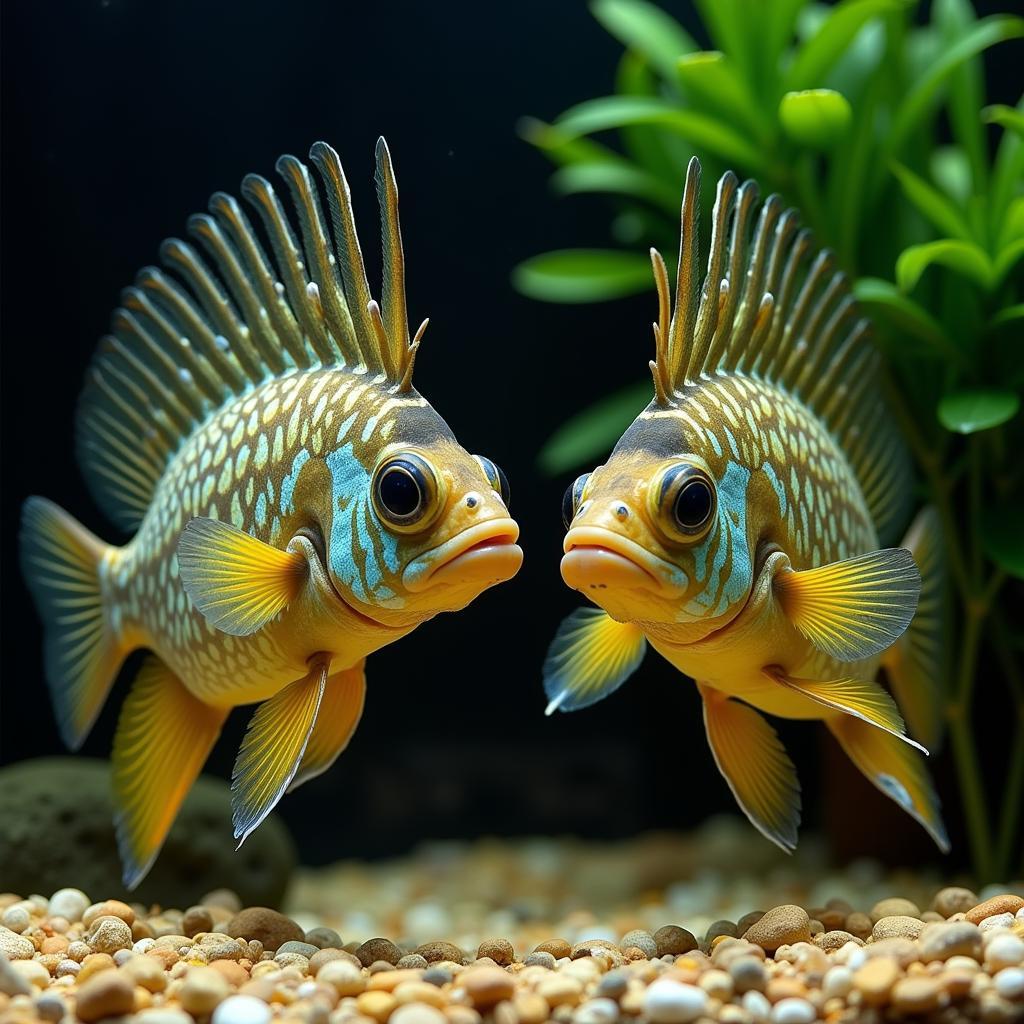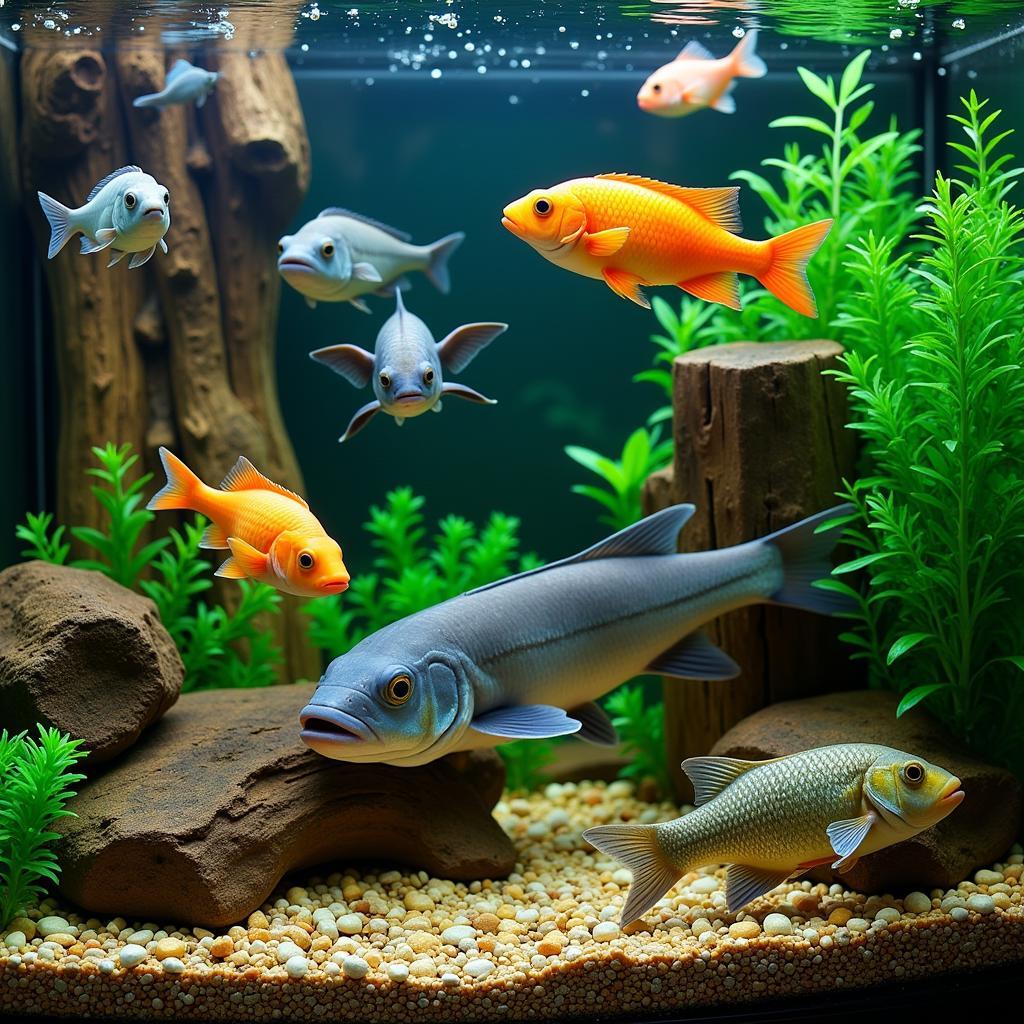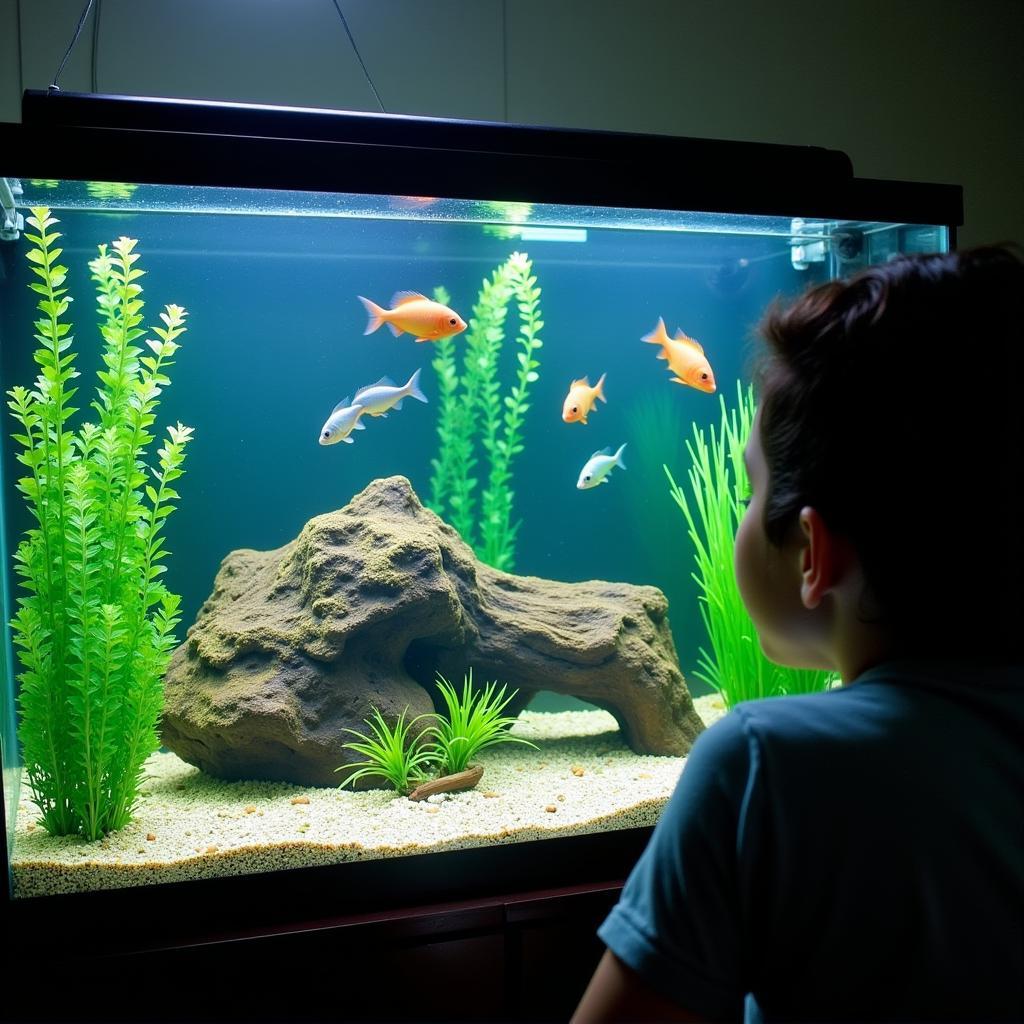African Cichlids with Other Fish: A Compatibility Guide
Keeping African Cichlids With Other Fish can be a rewarding experience, but it requires careful planning and consideration. Understanding the aggressive nature of many African cichlid species is crucial for a thriving community tank. Choosing the right tank mates is key to avoiding conflict and ensuring a peaceful, balanced ecosystem.
Understanding African Cichlid Aggression
African cichlids, especially those from the Rift Lakes of East Africa, are known for their territorial and sometimes aggressive behavior. This is largely due to their natural environment, where resources are often limited and competition is fierce. This territoriality can manifest as fin nipping, chasing, and even serious injury to other fish. Knowing this, you need to select tank mates that can hold their own. After the initial introduction period, African cichlids often establish a hierarchy within the tank, which helps maintain a relative peace. However, introducing new fish can disrupt this balance and lead to renewed aggression.
 African Cichlids Displaying Aggression
African Cichlids Displaying Aggression
Choosing Compatible Tank Mates for African Cichlids
So, which fish can coexist with African cichlids? Several species, with similar temperaments and environmental needs, can make suitable tank mates. Robust, fast-swimming fish that won’t be intimidated easily are ideal. Avoid slow-moving, long-finned fish, as they will likely become targets of aggression. Some good choices include certain species of catfish, such as Synodontis species, which are native to the same African lakes. These catfish are active scavengers, helping to keep the tank clean, and their armored bodies offer protection against cichlid aggression. Another suitable option is the African African knife fish lifespan.
 Compatible Tank Mates for African Cichlids
Compatible Tank Mates for African Cichlids
Tank Size and Setup for African Cichlids with Other Fish
A spacious tank is essential when keeping African cichlids with other fish. Overcrowding can exacerbate aggression, so a larger tank allows for more territory and reduces competition. Plenty of rocks, caves, and other decorations will also help create hiding places and break up sightlines, reducing territorial disputes. Ensure the water parameters, such as African cichlid ph and temperature, are suitable for all species in the tank. Regular water changes are vital for maintaining a healthy environment and reducing stress. You might be interested in learning about how African jewelfish florida interact with other species as well.
Monitoring and Managing Aggression
Even with careful planning, some level of aggression is inevitable with African cichlids. Closely monitor the tank after introducing new fish. Be prepared to separate individuals if aggression becomes excessive. Providing a varied and nutritious diet can also help reduce aggression by minimizing competition for food. It’s also worth exploring the possibilities of housing an African cichlid with big oscar fish under controlled conditions. Understanding African chchlet fish behavior is crucial for maintaining a harmonious tank.
 Monitoring an African Cichlid Tank
Monitoring an African Cichlid Tank
Conclusion
Successfully keeping African cichlids with other fish requires careful consideration of compatibility, tank setup, and ongoing management. By selecting appropriate tank mates, providing a suitable environment, and closely monitoring behavior, you can create a thriving and diverse community tank. With proper planning, African cichlids and their tank mates can coexist peacefully, adding beauty and vibrancy to your aquarium.
FAQ
- Can I keep African cichlids with tetras? Generally, no. Tetras are too small and peaceful, making them easy targets for aggressive cichlids.
- What are the best catfish for African cichlid tanks? Synodontis species are a popular choice due to their hardiness and scavenging habits.
- How big should my tank be for African cichlids and other fish? A larger tank is always better, with a minimum of 55 gallons recommended for most community setups.
- What are signs of aggression in African cichlids? Fin nipping, chasing, and constant displaying of dominance are all common signs of aggression.
- Can I keep different types of African cichlids together? Yes, but ensure they have similar water parameter requirements and temperaments.
- How can I reduce aggression in my African cichlid tank? Provide plenty of hiding places, maintain good water quality, and offer a varied diet.
- What should I do if two fish are constantly fighting? Separate them immediately to prevent injury.
Need more help? Contact us: Phone: +255768904061, Email: [email protected] or visit us at Mbarali DC Mawindi, Kangaga, Tanzania. We have a 24/7 customer service team.
